Some people think the words swirls and holograms refer to the same type of scratch pattern you see in car paint under bright sunlight or with the use of a bright swirl finder light. This is a common misconception. Swirls and holograms are actually two distinct types of scratch pattern.
This is important to define! In order for everyone in the car and boat detailing world to talk to one another in an intelligent manner, we need to have concrete definitions for what words specific to our industry mean, whether we’re speaking them in person, in a video or in the written word (like you’re reading here).
What Are Swirls?
Let’s start by defining what “swirls” are. A lot of people think swirls are CIRCULAR scratches seen on car paint (like on the hood or trunk lid) when viewing in bright, overhead sunlight or with a powerful inspection light. This isn’t actually accurate. Swirls ARE scratches in the paint, but they’re not really circular in shape. The scratches you see in a “swirl” actually run in different directions over the surface.
So if these scratches are random, why do they appear as “swirls”? When you have a strong source light shining on the paint, the thousands (even millions) of RANDOM scratches are all reflecting light off one side of the edge of each individual scratch back at the source of light. This creates a visual effect that the scratches are in fact circle scratches or circular in shape.
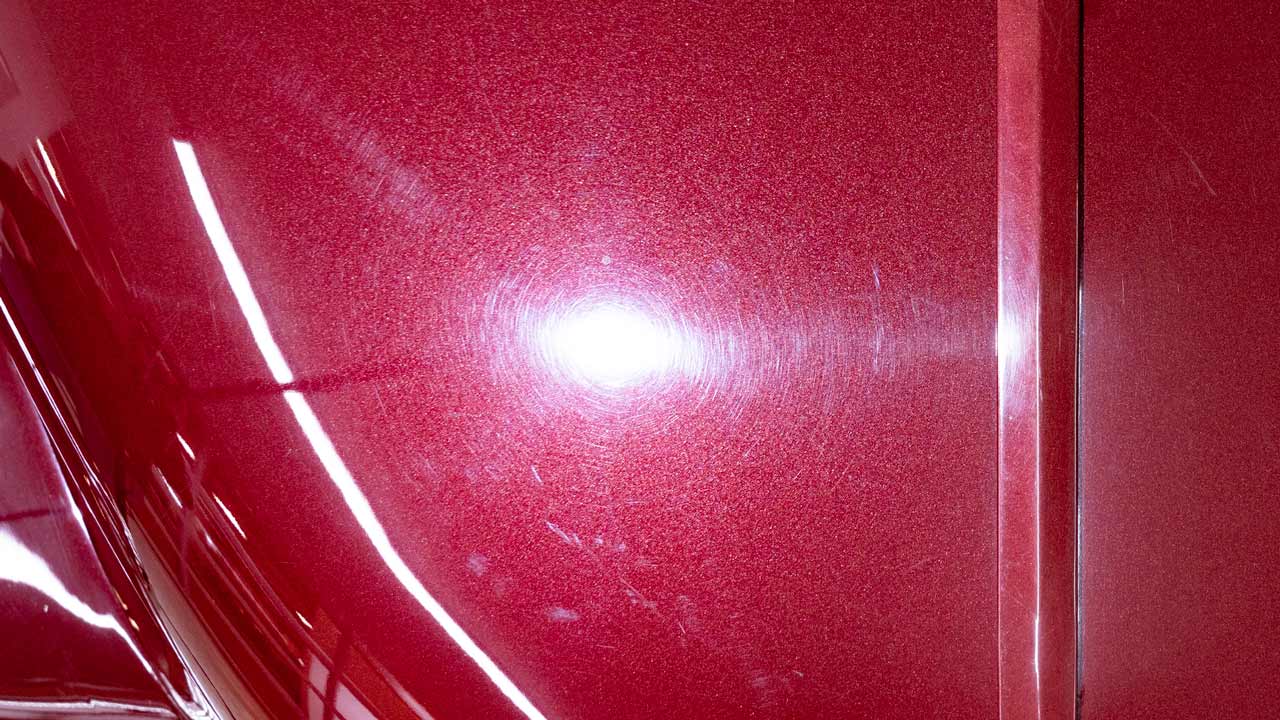
Where Do Swirls Come From?
Swirls are put into a car’s finish by normal wear-and-tear that takes place over the service life of the vehicle. Essentially, they’re caused by the way the paint is touched. The most common swirl-inducing ways we touch the paint come from:
- Worn and contaminated wash mitts: Over time, our wash mitts become contaminated with all kinds of tiny particles that when rubbed over your car’s finish scratch the delicate clear coat.
- Contaminated drying towels: Just like a wash mitt, the towels you use to dry after washing and rinsing your car become contaminated with tiny particles. Then, each time you wipe water off your car’s finish, you put scratches into the paint.
- Contaminated wiping towels: Microfiber towels used for wiping detailing products on your car also become contaminated overtime. Those built-up contaminants can scratch the finish while wiping. Next time you’re about to wipe something off your car’s paint, STOP — take a close inspection of the fiber weave that makes up the towel and I’ll bet you find all kinds of tiny particles and contamination embedded into the weave.
- Car washes: Besides the above, anytime you take your car to a car wash, chances are good the paint will get scratches inflicted into the paint. This includes any type of car wash besides the touchless type. Car washes that scratch paint include:
- Spinning brush-style automatic car washes: These are the worst as the spinning brushes grind scratches into your car’s clear coat finish.
- Spinning soft mop-style automatic car washes: These are also horrendous to your car’s delicate clear coat finish. Over time, these spinning soft mops are no longer soft and become very dirty. Each time they slap against your car’s finish, they inflict scratches into the paint.
- 100% hand car washes: Most people think these are safe because they invoke the “idea” of someone carefully and lovingly washing your car with a wash mitt by hand. This is only true for the best hand car washes — most are using wash mitts on your car that have been used multiple, multiple times on cars before your car and thus are severely contaminated. Plus, think about how many times these wash mitts are dropped on the ground or were used to clean/wipe wheels with metallic brake dust on them! All these things lead up to and guarantee contaminated wash mitts that will scratch your car’s finish.
How Can You Prevent Swirls?
The best way to avoid putting swirls into your car’s finish is to keep anything you’re using to touch your car clean and free of contaminants. Here’s one tip — I keep a pair of tweezers in the garage where I fold my towels after they come out of the dryer. I inspect the towels and if I cannot remove any type of contaminant with my fingers, I use the tweezers. If I cannot remove the contaminant, then I dedicate these contaminated towels for other non-paint detailing jobs, like wiping off excess tire dressing.

What are Holograms?
Holograms are a specific type of scratch pattern resulting from the use or misuse of a rotary polisher. The actual culprit that causes holograms are fibers in wool, microfiber, or coarse foam pads used with a rotary polisher. The type and quality of the products used can also be blamed.
There are a few different names for “holograms” that are used:
- Buffer trails
- Rotary-induced Machine Marring
- Zebra stripes (some US states)
- Polishing veil (Germany)
Why Does a Rotary Polisher Create Holograms?
Holograms occur when a rotary polisher with a direct drive rotates a buffing pad in a single direction. This action results in circular scratches, often in a zig-zag pattern that mirrors the path of the buffer.
Each of the hundreds of thousands of individual fibers that make up any type of fiber pad CUT the paint as the rotary polisher spins the pad against the paint. Foam pads can also put holograms into clear coat paint depending upon the aggressiveness of the foam formula as well as the product being used.
Besides the buffing pad, another culprit that will put holograms into your car’s clear coat finish is the type of abrasive technology used by the polish or compound. Most people don’t give the abrasive technology being used in any particular brand of compound, polish or cleaner wax they choose any thought, but they should.
There are products on the market that use GREAT abrasive technology, but there are also products on the market that use antiquated (or what I call “caveman”) abrasive technology. An old school term for old school compounds and polishes is “rocks-in-a-bottle”.
The reason these subpar products are referred to as “rocks-in-a-bottle” is because they are very gritty to your sense of touch — you can literally feel the abrasives as if they were “rocks”. And in the same way you can feel the grittiness, the paint feels the grittiness and shows that by way of holograms.
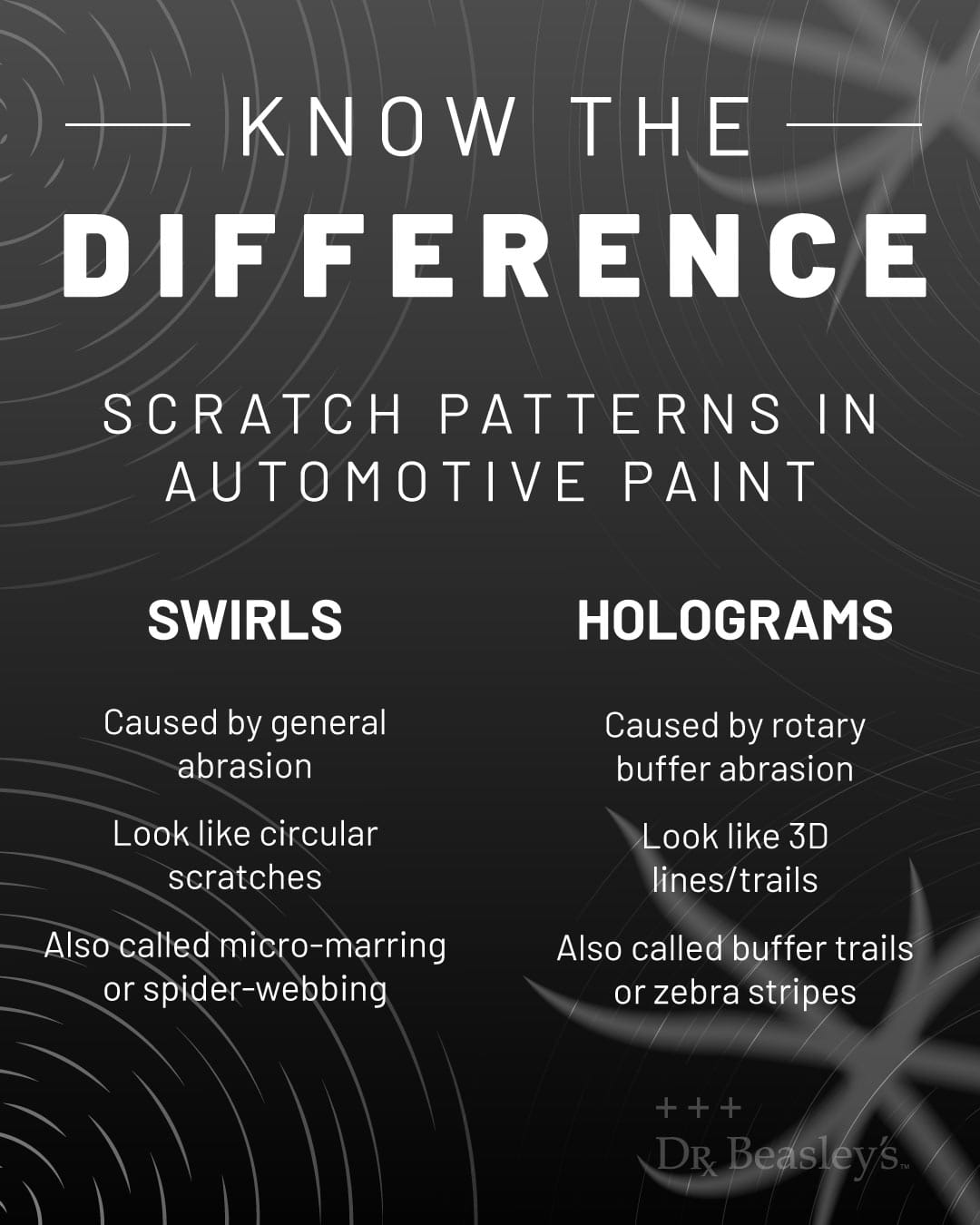
How to Avoid Holograms
Holograms are an unavoidable part of using rotary polishers. They are a NORMAL result from cutting paint hard to remove serious paint defects or sanding marks. The only way to avoid holograms is to follow your rotary polisher step with an orbital polisher and foam pad.
To reiterate, there’s nothing WRONG with using a rotary polisher – just don’t FINISH with a rotary polisher. Always take the time to re-polish any paint where you used a rotary polisher and use an ORBITAL polisher with a foam polishing pad as the follow-up step.
The oscillating action of an orbital polisher plus the uniform texture of a foam buffing pad (unlike individual fibers for a wool/microfiber pad) will remove the holograms to leave a hologram and swirl-free finish. Of course, it goes without saying, you also have to use great abrasive technology like Dr. Beasley’s Nano Surface Primers or a comparably high-quality product.
How to Remove Holograms
Like mentioned above, if the paint on your car has holograms, in all but the most serious cases, the holograms can be removed by re-polishing the paint using an orbital polisher with a foam pad and a high quality polish.
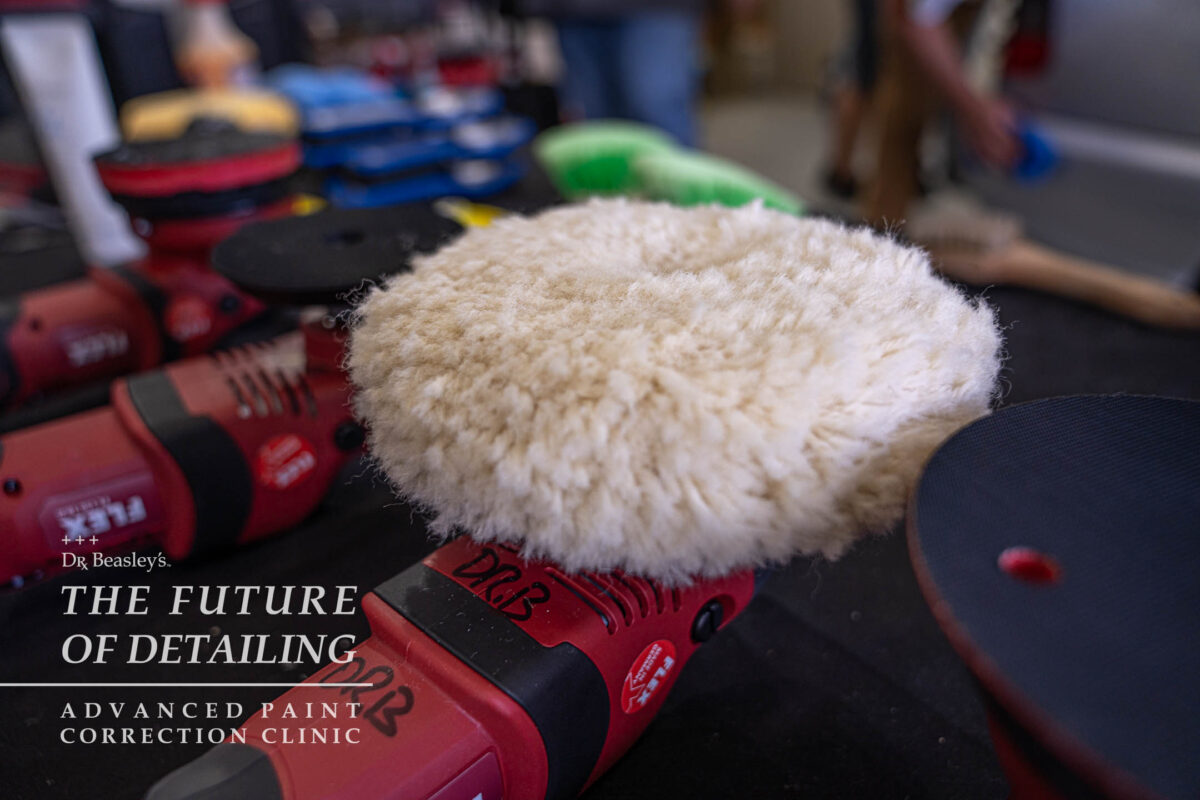
Why Holograms are Here to Stay
You would think that with such an easy way to remove holograms, they wouldn’t be a problem. Unfortunately, holograms are a problem now and will likely be a problem in the future. This is because some people don’t care about the quality of work they put out and thus buff with only a wool fiber pad on a rotary polisher and call it “good”.
They know most people don’t know what holograms are or how to inspect for them. Thus they see no need to take extra steps with an orbital polisher and a foam pad to remove the holograms before returning the car to the customer. If they don’t notice, why bother?
Want to Learn How to Remove Holograms? Register For One of Our Classes!
Hologram removal is one of the MANY topics we cover at our Future of Detailing classes. I’m proud to say that our car and boat detailing classes are the MOST hands-on detailing classes on planet Earth. There are literally no chairs, no sitting and now PowerPoint presentations.
Nothing wrong with academic detailing classes but I have found after teaching THOUSANDS of car and boat detailing classes, that the type of people that are interested in learning detailing, learn better by doing than sitting in a chair listening to someone talk about detailing.
Click here to see our current slate of classes.
What are you working on?
Besides detailing cars professionally, teaching classes on both car and boat detailing and writing articles and making videos sharing tips and techniques on these topics, I also love answering questions and helping others to success for their projects in their shop or garage. If you have any car or boat detailing questions, as well as glass polishing questions, feel free to reach out and I’ll do my best to help.
Mike Phillips – 760-515-0444 – [email protected]

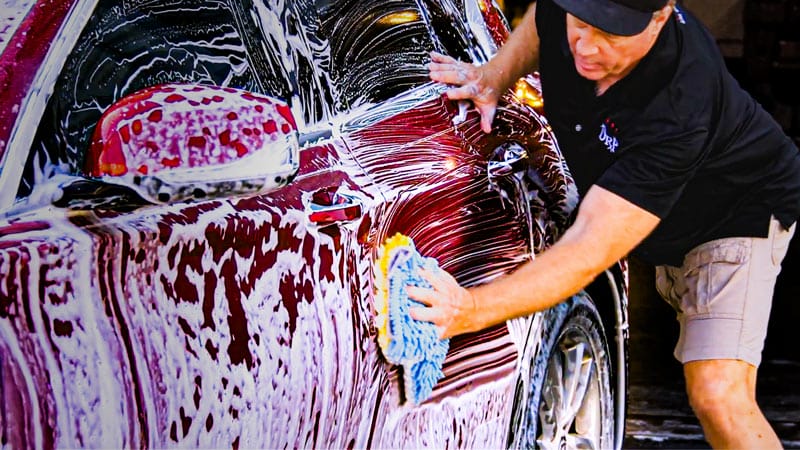

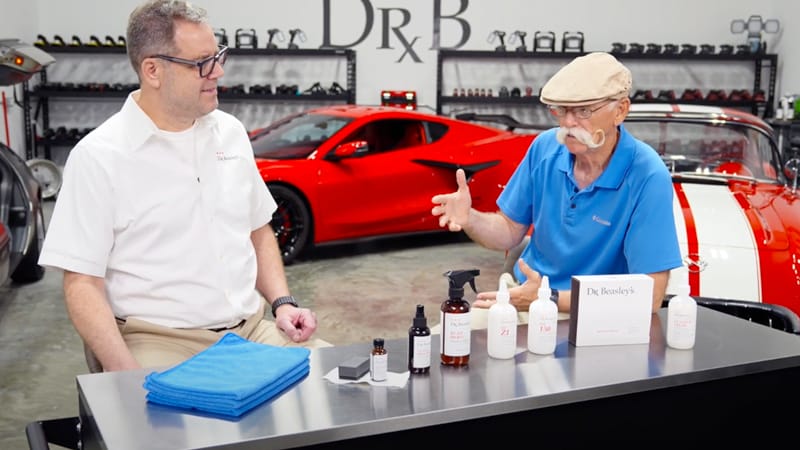
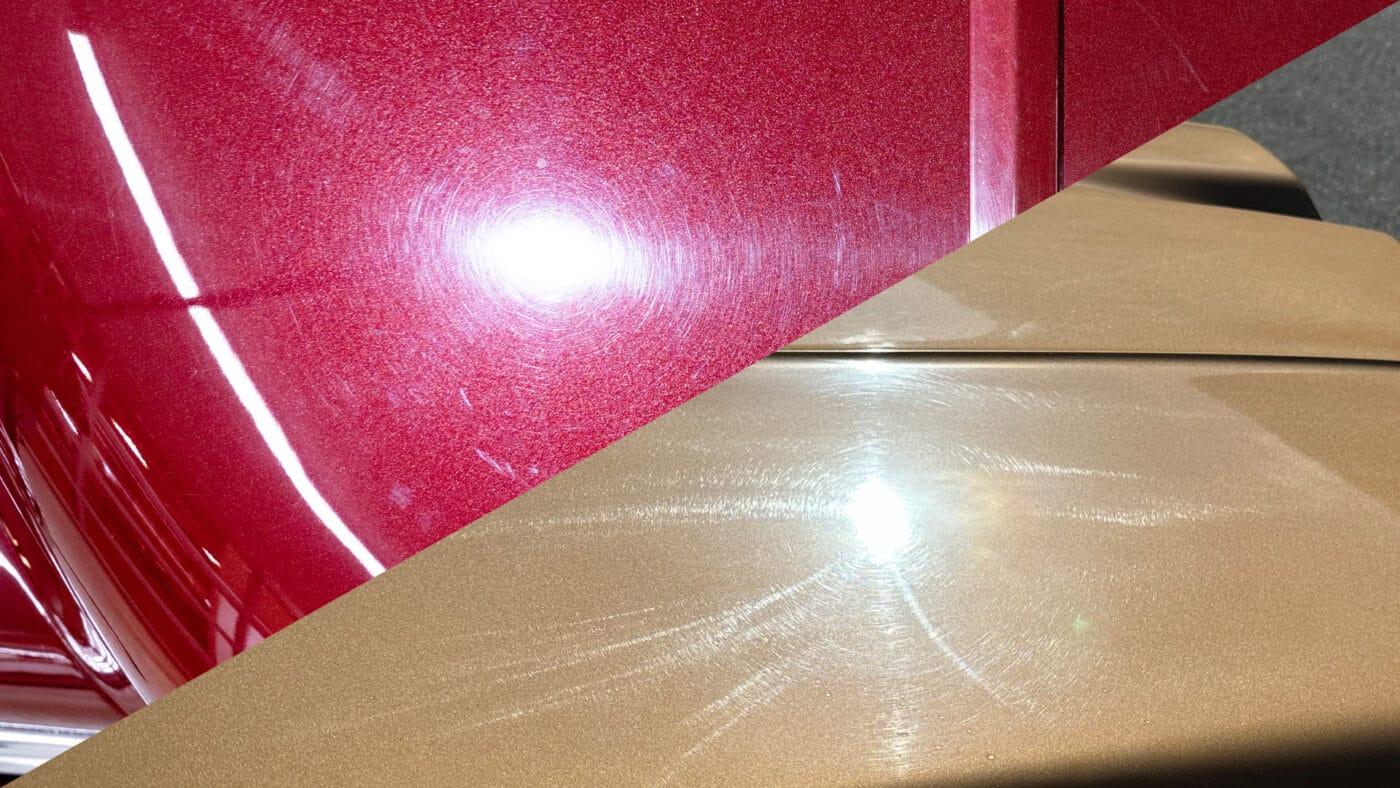
We recently started our car detailing business in Kansas and came across this article.
Thanks for posting about the differences between swirls and holograms. This article is a good starting point for using the correct tools to fix imperfections for my customers.
-Truman C. at Smooth Auto Detailing